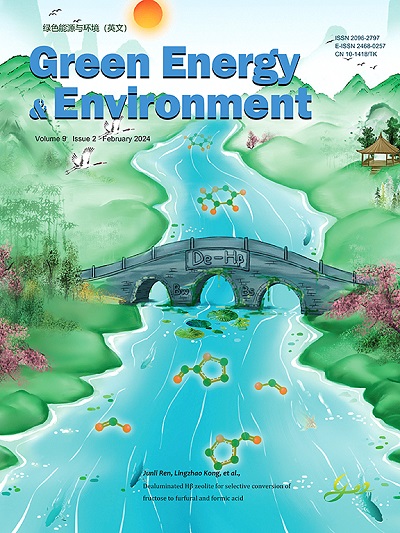Merging polymers of intrinsic microporosity and porous carbon-based zinc oxide composites in novel mixed matrix membranes for efficient gas separation
IF 10.7
1区 工程技术
Q1 CHEMISTRY, PHYSICAL
引用次数: 0
Abstract
Mixed matrix membranes (MMMs) have demonstrated significant promise in energy-intensive gas separations by amalgamating the unique properties of fillers with the facile processability of polymers. However, achieving a simultaneous enhancement of permeability and selectivity remains a formidable challenge, due to the difficulty of achieving an optimal match between polymers and fillers. In this study, we incorporate a porous carbon-based zinc oxide composite (C@ZnO) into high-permeability polymers of intrinsic microporosity (PIMs) to fabricate MMMs. The dipole–dipole interaction between C@ZnO and PIMs ensures their exceptional compatibility, mitigating the formation of non-selective voids in the resulting MMMs. Concurrently, C@ZnO with abundant interconnected pores can provide additional low-resistance pathways for gas transport in MMMs. As a result, the CO permeability of the optimized C@ZnO/PIM-1 MMMs is elevated to 13,215 barrer, while the CO/N and COCH selectivity reached 21.5 and 14.4, respectively, substantially surpassing the 2008 Robeson upper bound. Additionally, molecular simulation results further corroborate that the augmented membrane gas selectivity is attributed to the superior CO affinity of C@ZnO. In summary, we believe that this work not only expands the application of MMMs for gas separation but also heralds a paradigm shift in the application of porous carbon materials.在新型混合基质膜中融合本征微孔聚合物和多孔碳基氧化锌复合材料,实现高效气体分离
混合基质膜(MMM)将填料的独特性能与聚合物的易加工性结合在一起,在能源密集型气体分离领域大有可为。然而,由于难以实现聚合物与填料之间的最佳匹配,要同时提高渗透性和选择性仍然是一项艰巨的挑战。在本研究中,我们将多孔碳基氧化锌复合材料(C@ZnO)加入到具有固有微孔(PIMs)的高渗透性聚合物中,以制造 MMM。C@ZnO 和 PIMs 之间的偶极-偶极相互作用确保了它们之间的出色兼容性,从而减少了由此产生的 MMM 中非选择性空隙的形成。同时,具有丰富互连孔隙的 C@ZnO 可为 MMMs 中的气体传输提供额外的低阻力通道。因此,优化后的 C@ZnO/PIM-1 MMM 的一氧化碳渗透率提高到 13,215 barrer,而 CO/N 和 COCH 选择性分别达到 21.5 和 14.4,大大超过了 2008 年的罗伯逊上限。此外,分子模拟结果进一步证实,膜气体选择性的提高归功于 C@ZnO 对 CO 的卓越亲和力。总之,我们认为这项工作不仅拓展了 MMMs 在气体分离方面的应用,还预示着多孔碳材料应用范式的转变。
本文章由计算机程序翻译,如有差异,请以英文原文为准。
求助全文
约1分钟内获得全文
求助全文
来源期刊

Green Energy & Environment
Energy-Renewable Energy, Sustainability and the Environment
CiteScore
16.80
自引率
3.80%
发文量
332
审稿时长
12 days
期刊介绍:
Green Energy & Environment (GEE) is an internationally recognized journal that undergoes a rigorous peer-review process. It focuses on interdisciplinary research related to green energy and the environment, covering a wide range of topics including biofuel and bioenergy, energy storage and networks, catalysis for sustainable processes, and materials for energy and the environment. GEE has a broad scope and encourages the submission of original and innovative research in both fundamental and engineering fields. Additionally, GEE serves as a platform for discussions, summaries, reviews, and previews of the impact of green energy on the eco-environment.
 求助内容:
求助内容: 应助结果提醒方式:
应助结果提醒方式:


